Enclomiphene Citrate Capsules
An alternative to clomiphene citrate for men with hypogonadism
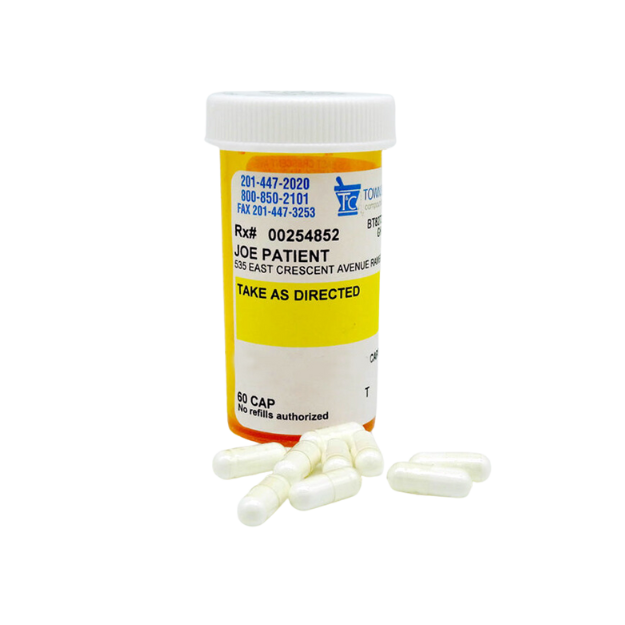
Now available at Town & Country Compounding!
Ranked in the Top 1% of Compounding Pharmacies in the Nation
What is Hypogonadism?
Hypogonadism, which is a men’s health condition where the body doesn’t produce enough testosterone, mainly made in the testes in men, and can cause symptoms such as low libido, erectile dysfunction, fatigue, and decreased muscle mass.
Testosterone plays a key role in things like energy, muscle mass, mood, and sexual function. When testosterone levels are low, it can lead to a number of changes in the body.
What Are the Signs and Symptoms of Hypogonadism (Low Testosterone)?
If you have low testosterone, you might notice low energy, reduced libido, mood changes, loss of muscle mass, increased body fat, decreased bone density, difficulty concentrating, hot flashes or sweating, smaller testicles, and sleep issues.
There are two types of hypogonadism, primary and secondary hypogonadism.
Primary Hypogonadism occurs the testes are unable to produce enough testosterone naturally. Testosterone replacement therapy is the typical therapy; by providing exogenous testosterone, normal testosterone levels can be restored, alleviating symptoms like low energy, reduced libido, and muscle loss.
However, this does not address potential fertility concerns, as testosterone therapy can reduce sperm production, and men with primary hypogonadism may already have reduced fertility due to testicular dysfunction.
*Men who want to preserve their fertility should not use testosterone replacement therapy; there are better alternatives.
Secondary Hypogonadism occurs when the hypothalamus or pituitary gland (parts of the brain that control the testes) are not sending the right signals to the testes, resulting in low testosterone production. Testosterone replacement therapy is typically avoided in secondary hypogonadism because it only addresses the symptom (low testosterone) rather than the root cause (insufficient LH/FSH production from the hypothalamus or pituitary).
Why Testosterone Replacement Therapy is Not Used in Secondary Hypogonadism:
For primary hypogonadism, Testosterone replacement therapy (TRT) is the appropriate treatment since the problem is in the testes, and external testosterone helps restore normal levels.
However, for secondary hypogonadism, TRT is not ideal because it does not address the underlying problems with the hypothalamus or pituitary, can lead to testicular atrophy and infertility, and creates a long-term dependence on external testosterone.
Instead, medications called selective estrogen receptor modulators (SERMs) such as clomiphene citrate and enclomiphene citrate that stimulate the natural hormone production process are preferred in secondary hypogonadism, as they work with the body’s systems to restore natural testosterone production while minimizing the risks of infertility and dependence on external testosterone. These drugs act on the hypothalamus and pituitary gland to increase the production of luteinizing hormone (LH) and follicle-stimulating hormone (FSH). These hormones, in turn, stimulate the testes to produce more testosterone.
Secondary Hypogonadism occurs when the hypothalamus or pituitary gland (parts of the brain that control the testes) are not sending the right signals to the testes, resulting in low testosterone production. Testosterone replacement therapy is typically avoided in secondary hypogonadism because it only addresses the symptom (low testosterone) rather than the root cause (insufficient LH/FSH production from the hypothalamus or pituitary).
Compounded Enclomiphene Citrate
at Town & Country Compounding Pharmacy
Why Prescribers Trust Town & Country Compounding for Enclomiphene?
We understand that one size does not fit all when it comes to medication. Therefore, we collaborate closely with prescribers to develop tailored formulations of Enclomiphene citrate, taking into account factors such as dosage adjustments, alternative delivery methods, and patient-specific preferences.
The most common compounded strengths are 6.25mg,12.5mg, 25mg, and 50mg.
Why Enclomiphene Citrate vs Clomiphene Citrate?
Hot flashes while using clomiphene citrate?
Clomiphene citrate is a mixture of two isomers: clomiphene (cis-isomer) and enclomiphene (trans-isomer). The cis-isomer (clomiphene) has stronger estrogenic effects, particularly in the hypothalamus, which can lead to more pronounced side effects like hot flashes, mood swings, and other estrogenic-related symptoms. Enclomiphene, being the trans-isomer, has a more targeted effect on stimulating gonadotropins (LH and FSH) to increase testosterone production with a lower estrogenic effect.
Because enclomiphene has less of an estrogenic impact, it tends to cause fewer hot flashes and other estrogen-related side effects compared to clomiphene citrate
This is one reason why enclomiphene is often preferred in treating male hypogonadism or low testosterone, as it appears to stimulate testosterone production without as many of the unwanted estrogenic side effects.
Would you like more details on the differences between the two drugs or their clinical applications?
Advantages of Enclomiphene Citrate vs Clomiphene Citrate
| Category | Enclomiphene Citrate | Clomiphene Citrate |
|---|---|---|
| Side Effects | Fewer estrogenic side effects such as mood swings, hot flashes, or gynecomastia. | Higher risk of estrogenic side effects like mood swings, hot flashes, gynecomastia, and visual disturbances. |
| Mechanism of Action | Selectively stimulates LH and FSH release, promoting testosterone production while maintaining sperm production. | Blocks estrogen receptors in the hypothalamus, stimulating gonadotropin (LH, FSH) release, but may have broader estrogenic effects in peripheral tissues. |
| Effect on Testosterone Levels | May increase both total and free testosterone. | Increases testosterone but may result in suboptimal levels in some men. |
| Effect on Sperm Production | May help maintain or improve sperm count. | May improve sperm count but less consistent, especially in men with secondary hypogonadism. |
| Fertility Preservation | May support both testosterone production and spermatogenesis effectively, potentially beneficial for fertility preservation. | Can improve sperm quality but may be less reliable in maintaining fertility. |
| Targeted Action | More selective in its action, primarily targeting the hypothalamus and pituitary. | Broader effects on estrogen receptors, which can affect other tissues. |
| Use in Hypogonadism | May be a potential option for hypogonadal men who also want to preserve fertility. | Effective for hypogonadism but less effective for preserving fertility in some cases. |
| Overall Impact | May offer a more targeted approach to balancing testosterone levels and fertility with fewer side effects. | Effective but may have mixed outcomes and more side effects, particularly in peripheral tissues. |
Leaders in Men’s Health Medications
Town & Country Compounding is a leader in men’s health compounds. with a team of highly skilled pharmacists and professionals with extensive experience in compounding medications
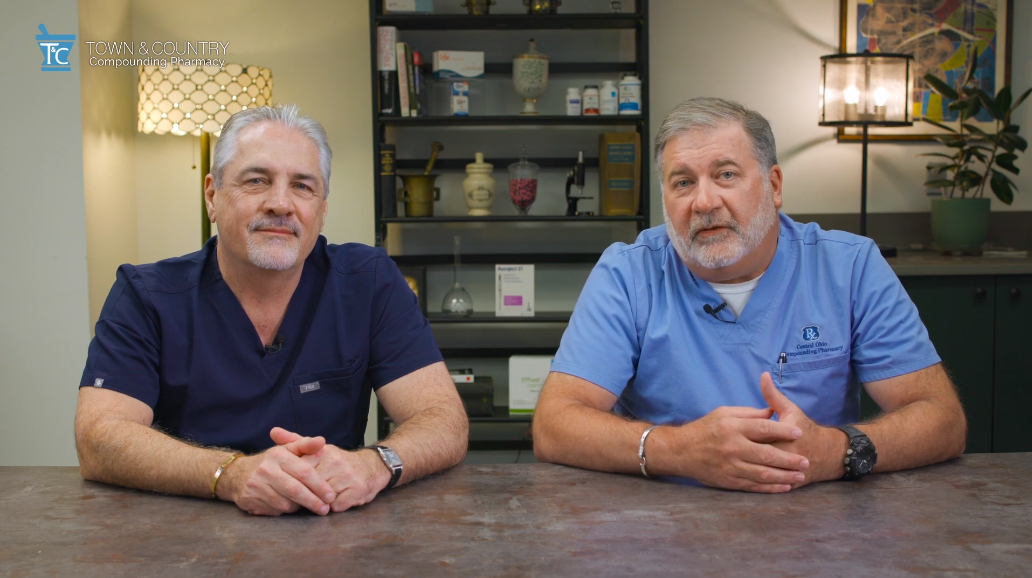
Men’s Sexual Health Overview
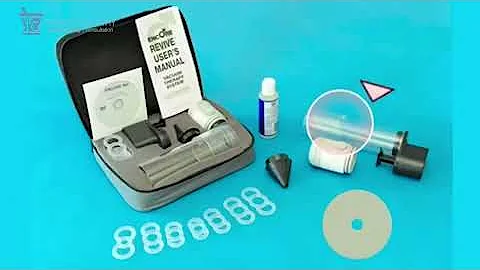
Mechanical Vacuum Pump
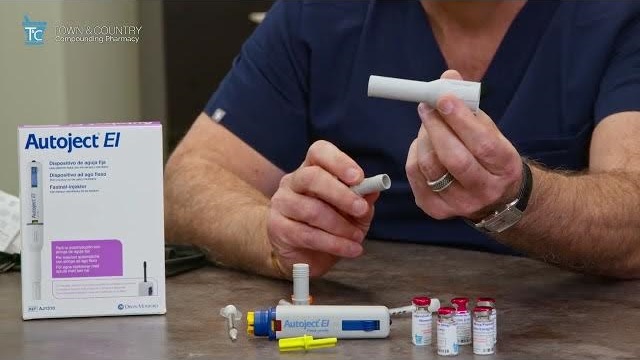
Injection Techniques
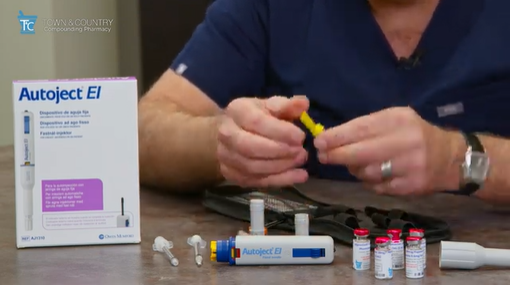
Auto-injector Device
References
Thomas, J., Suarez Arbelaez, M., Narasimman, M., & et al. (2023). Efficacy of Clomiphene Citrate Versus Enclomiphene Citrate for Male Infertility Treatment: A Retrospective Study. Cureus, 15(7), e41476. https://doi.org/10.7759/cureus.41476
Tena-Sempere, M., & García-Segura, L. M. (2020). “Efficacy and safety of clomiphene citrate and enclomiphene citrate for the treatment of male infertility and hypogonadism: A systematic review.” Reproductive Biology and Endocrinology, 18(1), 82.
Gül, M., & Öztürk, A. (2021). “Role of clomiphene citrate and enclomiphene citrate in male infertility: A retrospective study of treatment outcomes.” Fertility and Sterility, 115(3), 692-700.
Ramasamy, R., & Hsieh, T. C. (2021). “Clomiphene citrate versus enclomiphene citrate for male infertility: A prospective randomized study.” Andrology, 9(5), 1174-1180.
Ghanem, H., & Mansour, R. (2022). “Enclomiphene citrate: A promising treatment for male infertility and hypogonadism.” Journal of Andrology, 43(2), 213-220.
Mills, L., & Young, C. (2023). “Comparison of clomiphene citrate and enclomiphene citrate in the management of male infertility: A meta-analysis.” Andrology, 11(1), 53-61.
